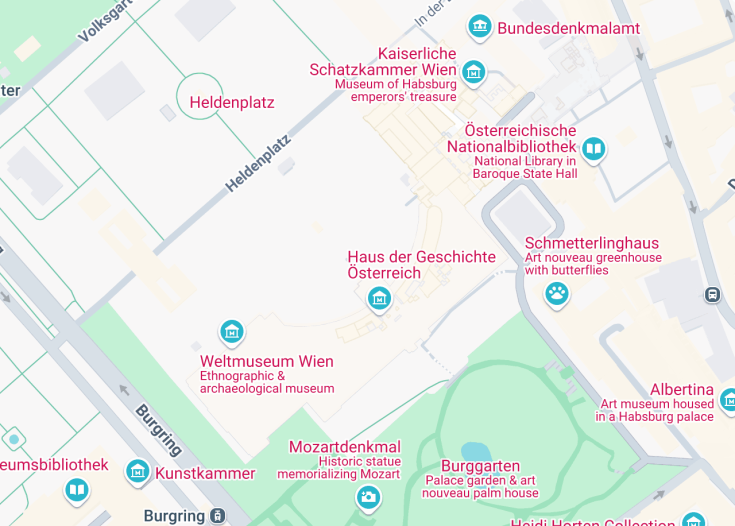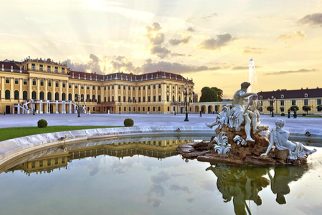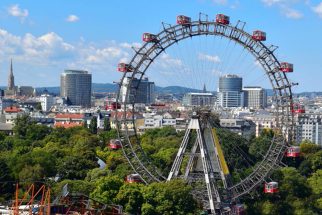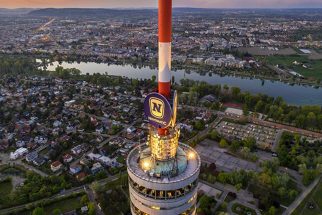The Hofburg Palace in Austria stands as a monumental icon of architectural beauty and historical significance. Originally a medieval castle, it has evolved through centuries into a magnificent complex embodying the nation’s imperial past. Now, it serves not only as the official residence of the President of Austria but also as a museum complex open to the public, offering a deep dive into the Habsburg dynasty’s cultural and political life. The palace’s intricate decorations, sprawling gardens, and state rooms attract countless visitors each year, keen on exploring its rich history and stunning artistry.
To best appreciate the grandeur of Hofburg Palace, consider joining a guided tour which can offer insightful stories behind the historic rooms and artifacts.
If planning to visit multiple museums within the palace, purchasing a combination ticket can provide both a cost-effective option and save time on purchases at each entrance.
Hofburg Palace: A Royal Legacy
The Hofburg Palace in Austria stands as a monumental icon of the country’s imperial past. Located in the heart of Vienna, this majestic compound has been the residence of royalty for centuries, primarily housing the Habsburg dynasty. Today, it serves not only as the official residence of the President of Austria but also as a cultural hub that attracts tourists from around the globe. With its intricate architecture spanning several epochs, the Palace is a testament to Austria’s rich history and architectural grandeur. Visitors are captivated by its expansive art collections, which are displayed across multiple museums within the complex. Additionally, the Spanish Riding School, with its world-renowned Lipizzan horses, offers an unforgettable experience. Annually, the Palace grounds and state rooms draw millions, all keen to glimpse the opulent lifestyle of Europe’s royal lineage. Each room tells a story, vividly encapsulated in the lush furnishings and preserved ambiances of a bygone era. Whether you’re seeking a deep dive into Austria’s aristocratic history or a chance to see classical horse ballet, Hofburg Palace provides a compelling, enriching visit.
Exploring the Imperial Apartments
At the Hofburg Palace, the Imperial Apartments stand as a captivating highlight. These rooms, once the private quarters of Emperor Franz Joseph and Empress Elisabeth, are preserved with an authentic feel of the imperial lifestyle. Visitors can walk through a suite of 19 rooms, including the lavish bedrooms, a salon, and a study, each adorned with luxurious furnishings and personal artifacts that belonged to the royal family. Not to be missed is the Sisi Museum within the apartments, dedicated to the beloved Empress Elisabeth. The museum showcases her personal items, such as her famous beauty recipes and the actual attire she wore, providing insights into her private life and the pressures of royal duties. The rich decor and historical artifacts make it a must-see for anyone interested in European royalty and history.
The Silver Collection: A Glimpse into Royal Elegance
The Hofburg Palace’s Silver Collection is another treasure trove that chronicles the lavish lifestyles of Austria’s imperial family. This extensive collection includes over 7,000 objects, which were used daily within the palace. The assortment features a stunning array of hand-crafted silverware, porcelain, and glassware, each piece reflecting the exquisite craftsmanship and opulence of the time. Particularly impressive are the elaborate centerpieces and imperial table settings, which illustrate the grandeur of the banquets once held at the palace. This exhibition offers visitors a unique perspective on the cultural and artistic heritage of the Austrian empire, making it an enlightening experience for history buffs and art enthusiasts alike.
Explore the grandeur of Hofburg Palace
Hofburg Palace is a destination that caters to an array of visitors, making it ideal for history enthusiasts, art lovers, and families. With its fascinating museums, sprawling architecture, and rich cultural history, the palace offers a captivating experience for all ages. Children can marvel at the opulence of the royal chambers, while adults appreciate the art and historical artifacts. The elderly also find the palace accessible and interesting, with plenty of rest areas and captivating stories in every corner.
Discover the best time to visit Hofburg Palace
Visiting Hofburg Palace is a delightful experience year-round, but spring and autumn are particularly ideal. These seasons offer mild weather, making it comfortable to explore the extensive grounds and enjoy the outdoor attractions. Additionally, the palace is less crowded during these times, allowing for a more personal and engaging tour.
Annual events
Visitors should consider planning their visit during the annual Christmas market. This festive event transforms the palace grounds with sparkling lights and holiday-themed stalls, providing a magical backdrop to the historical site.
Accessibility and limitations at Hofburg Palace
The palace is committed to ensuring that all visitors can enjoy what it has to offer, albeit with some limitations.
Accessibility
Limitations
- Large bags and backpacks are not permitted inside the museum areas.
- Photography is restricted in certain exhibits.
- Food and beverages are not allowed beyond the cafe areas.
Notes to visitors
- Late entry is not permitted; ensure you arrive in accordance with your booked time slot.
- Some areas may be crowded; patience is appreciated.
General information
Essential details for your visit to Hofburg Palace:
Location
The palace is centrally located, surrounded by notable landmarks such as the Vienna State Opera and the MuseumsQuartier. Accessible easily via the Ringstraße that circles the historic center of Vienna.
Address:
Hofburg, 1010 Wien, Austria.
Opening Hours
The palace is open daily from 09:00 am to 05:30 pm. It remains closed on certain public holidays, please check their website before planning your visit.
Reaching Hofburg Palace
Hofburg Palace is well-connected by various means of transport:
Car
Parking options are available around the area, although spaces can be limited during peak seasons.
| Route | Distance | Travel time |
|---|---|---|
| From Heldenplatz | 0.5 miles (0.8Km) | 2 minutes |
| From Karlsplatz | 1 mile (1.6Km) | 5 minutes |
| From Praterstern | 3 miles (4.8Km) | 10 minutes |
Public Transport
The nearest subway station is Herrengasse on the U3 line, a short walk to the palace. Buses and trams also serve the nearby area.
Nearby Attractions
Here are additional attractions close to Hofburg Palace:
- Museum of Art History – 0.5 miles (0.8 km)
- Natural History Museum – 0.6 miles (1 km)
- Austrian National Library – 0.2 miles (0.3 km)
- Vienna State Opera – 0.4 miles (0.6 km)
- Albertina Museum and Art Gallery – 0.5 miles (0.8 km)
- St. Stephen’s Cathedral – 0.9 miles (1.4 km)
- Belvedere Palace – 1.9 miles (3 km)
- MuseumsQuartier – 0.4 miles (0.6 km)
- Vienna City Hall – 0.6 miles (1 km)
- Burgtheater – 0.7 miles (1.1 km)
- Prater Amusement Park – 3 miles (4.8 km)
- Schönbrunn Palace – 5 miles (8 km)
Common questions
What is the historical significance of Hofburg Palace?
What are the must-see attractions within Hofburg Palace?
What are the architectural styles present in Hofburg Palace?
Can you explore the gardens of Hofburg Palace?
What dining options are available near Hofburg Palace?
Is photography allowed inside Hofburg Palace?
Are there guided tours available at Hofburg Palace?
What special exhibits are typically hosted at Hofburg Palace?
How can individuals with disabilities access Hofburg Palace?
Are audio guides available at Hofburg Palace?
What is the best time of year to visit Hofburg Palace?
Can you attend any performances at the Spanish Riding School in Hofburg Palace?

Is the Hofburg Palace worth a visit?
The Hofburg Palace in Vienna stands as a monumental piece of history, encapsulating over six centuries of architectural innovation and royal heritage. A visit to the palace offers a unique glimpse into the luxurious life of the Habsburg rulers. Tourists can explore the spectacular imperial apartments, the Sisi Museum, and the silver collection. However, while its opulent halls and rich history are a draw, the experience can be overwhelming due to its sheer scale and the dense flow of visitors in peak seasons. This can detract somewhat from the overall experience, especially for those seeking a more intimate historical encounter. Despite these points, its cultural significance and architectural beauty make it a worthwhile stop for those interested in Austria’s imperial past.















